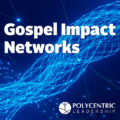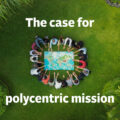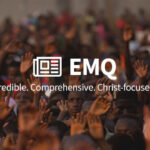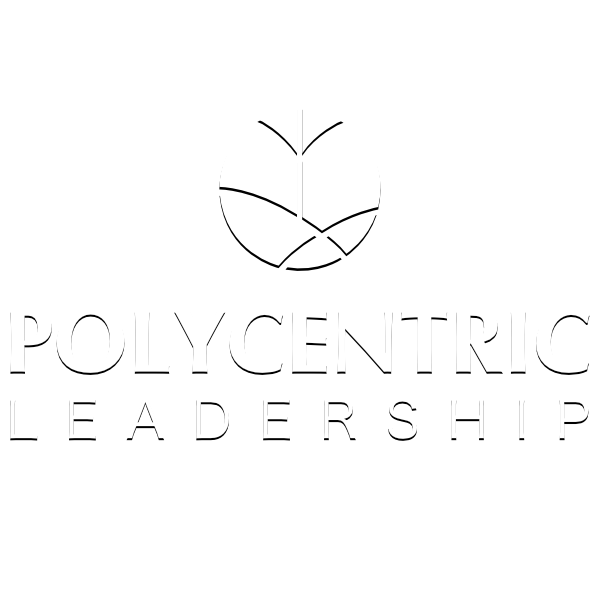Joseph W. Handley, Jr.
POLYCENTRICISM AND MISSION
As the world struggles with mounting tensions, I am convinced that we need a new approach to leadership. This year, in particular, these issues leaped in front of us as a global pandemic hit our world, the economy faltered, and political tensions rose in areas we all thought would be more peaceful. All of these challenges were compounded by a crisis of leadership, facilitating disruptive political engines with the forces of globalism, nationalism, and tribalism driving the world.1 These concerns compelled me to see if another form of leadership could be helpful to the world in which we lead. And just as my research on this idea came to a close, the world seemed to rupture ever further in 2020 and these early days of 2021.
Polycentrism came into view while reviewing the state of global ministry today and ways we could pivot to provide wise leadership to fulfill God’s mission in the world. I first encountered these concepts while engaging with Allen Yeh’s book Polycentric Missiology.2 Polycentrism is an approach to governance where “the doctrine that a plurality of independent centers of leadership, power, or ideology may exist within a single political system… the fact of having many centers of authority or importance.”3
I came to believe that “Polycentrism provides a stronger leadership paradigm for leading missional endeavors in an interdependent, globally networked world.” In reviewing the research on mission history4 and decades of enquiry in polycentric governance,5 I discerned six important themes that comprise an emerging theoretical model which I call Polycentric Mission Leadership. Given the complexities we live with today and the challenges we are facing, I am convinced that a collaborative, communal approach to leadership that empowers multiple centers of influence and includes a diverse array of leaders is better for addressing the issues before us and leading during this era of world history, even more so now that I see the nations pulling apart from one another through tribalized reactions to the challenges we face.
We need each other!
“For as in one body we have many members, and the members do not all have the same function, so we, though many, are one body in Christ, and individually members one of another.”
— Romans 12:4-5 ESV
A TRINITARIAN PARADIGM OF LEADERSHIP
Core to this new theory is the idea of how our Lord functions in the Trinity. Mission studies have been looking at the Trinity as a paradigm for mission for some time and I believe this has implications for the way we lead as well.6 Dwight Zscheile articulates a trinitarian approach to leadership:
Leadership communities in the image of the Trinity embrace a level of mutuality, reciprocal acknowledgement of each other’s gifts, vulnerability to one another, and genuine shared life that transcends simply getting the job done. Thus cultivating a community in the image of the divine community—a community of reconciliation, interdependence, mutuality, difference, and openness— becomes central to leadership in a trinitarian perspective. This includes both the community of leaders and the community led by the leaders.
7Just as the Father, Son, and Holy Spirit lead in a polycentric manner, and as the scriptures provide examples of plural forms of leadership, we as mission leaders can strengthen our efforts by leading polycentrically. Ultimately, God directs our vision and leads the way and his model is one that embodies these six themes in a Trinitarian approach. This is a model we can emulate as we follow his lead and provide leadership in the mission in which we serve. As we become more polycentric in leadership, we might become more like Jesus, our Good Shepherd and Servant Leader.
LEADING POLYCENTRICALLY
Leading today requires a broader array of voices representing indigenous and regional networks who are free to self-organize within complex, adaptive, and self-regulating systems. In a world that is ever-changing with increasing polarization, effective spiritual leadership is paramount. Polycentric Mission Leadership is a model that functions across multiple spheres of influence. These include geography, ethnicity, age, regions, gender, and nationalities. It is a leadership that is inclusive of all the centers of influence within one’s network, movement, or organization. It pulls from the diversity across these sectors to better guide a movement. From each of these diverse platforms, a community is formed, rooted in the Trinity. This community operates as a collective, inspired by the Holy Spirit, empowering and releasing the gifts and potential of everyone in the mission. This inspiration is where vision forms. It is the work of God from which we draw strength, build roots of character and establishes core values to serve within the Missio Dei.
Just as the Father, Son, and Holy Spirit lead in a polycentric manner, and as the scriptures provide examples of plural forms of leadership, we as mission leaders can strengthen our efforts by leading polycentrically.
Each community draws strength from their uniqueness allowing them to operate and coordinate their efforts according to their distinct call. They form interdependent teams working together through shared ideas and collective endeavors in a way that is multi-layered. In essence, they are an entrepreneurial enterprise, a catalyzing self-governing entity, called to fulfill the mission to which they have been called. The Trinity is their model: Father, Son, and Holy Spirit operating together and interdependently, functioning through unity in their diversity. Each maximizes their giftedness similar to the Ephesians 4 model highlighted by J.R. Woodward.8 In essence, a polycentric model of leadership is a model that is a collaborative form of leadership. It’s a leadership that forms in community, drawing from the diversity of the movement to provide wisdom, guidance, and direction. It gives freedom to each location to operate based on the collective commitments determined by the community and shaped by the charismatic presence of the Trinitarian Lord, foundational to orthodox Christian faith.
In assessing the new theory, I interviewed several leaders within the Lausanne Movement to test the viability of the ideas. In this next section, those interviews will be presented along with the themes that were discovered to add dimension to the ideas.
POLYCENTRIC LEADERSHIP THEMES

Polycentric Mission Leadership includes six themes that when deployed together, a stronger approach to leading mission movements is available. These themes include:
Charisma

Charisma is a trait that includes having a deep spiritual base along with a strong set of core values. Charisma is more than just having a charismatic personality though spiritual authority is definitely included. It includes strength of character, trustworthiness, and a faithful presence. Charisma is important to effective polycentric leadership. Whether it be good character, spiritual inspiration, or casting and carrying out vision, this is a theme that is crucial to leading well as a mission leader today.
Sarah Breuel, Lausanne Movement board member, shares one of the most important aspects of this for mission leaders: “[Leadership] falls down to God raising people whose hearts are so given to him. People who are reckless to saying ‘yes’ to Jesus. No challenges are too big for that. Dependency on God! John 15 for me. Abiding the daily life and drawing from the source. Completely dependent to Jesus. The most important thing is dependency on God and abiding in Jesus. Just trust God with every fiber of your being.”9
Doug Birdsall, honorary chair of the Lausanne Movement, amplifies this detailing several key attributes of charisma, “Ministry vision doesn’t begin with human initiative but with a divine invitation. Greatness is seen in overcoming obstacles (in perseverance) not accomplishments. People who work out of moral power and authority have been given gifts of leadership, communication, administration, and inspiration. [People who know how] to walk between the two extremes of analysis of paralysis and ready, fire, aim. People who actually know the landscape. [They are] smart and understand what needs to happen and have a plan. [They have the] calling, integrity, understand the times, and marshal resources to bring about intended change for good. They create cohesion with freedom. They create excitement because of what we can do together. [They know how] to build rivers and banks and dams to get the water moving and generating power.”10
Collaborative

Collaboration is another central theme. it includes the theological partnership found in the perichoresis in the power of the Trinity. Serving together in a shared participatory manner is paramount for effective global leadership. In order for a leader to be effective today, we must be collaborative in our approach, willing to work in a team-centered manner where no one is above another and all serve together toward the goals of their particular mission.
Nana Yaw Offei Awuku, Global Associate Director for Generations with Lausanne, captured this theme well: “Nobody anywhere should set the agenda for the global church today. It must be a collaborative effort. All of us must do it together. No one can do it alone.”11
Many ministries are stuck in old top down, centralized patterns. Gen. Stanley McChrystal in his excellent book about leading during the era of terrorism, suggested a Team of Teams approach.12 This collaborative approach is more conducive to what is needed today.
Communal

Leading via community is clearly an integral part of a polycentric model of leadership. In a family-like atmosphere of serving with one another, leaders gain perspective and insight from others and are better able to hold each other to higher standards and model collective behaviors they aspire toward seeking to fulfill their common vision and mission. In this theme, cooperation includes a deeper sense of togetherness. Here, collaborators form a community, where vision is shared, and they function as a team. In this way, ownership is taken to deeper levels of commitment. Leaders that work with others in community bring change to their missions and foster an environment that will go farther together. As they serve together, comradery builds, vision forms, and action takes shape. Patrick Fung, Lausanne board member, expresses this well:
[The longer I lead, the more important it is] to connect with people heart, mind and soul. The connectiveness builds trust that people will follow. That requires vulnerability, openness and ability to connect regularly. I think it’s only by sharing lives together, that you can lead. You can lead a meeting, but you need to share lives. A true authentic leadership will be part of the life together – Jesus shared life together. True authentic leadership requires this.13
Relational

One of the most important dimensions to polycentric leadership is a relational approach. Being able to spend time with one another, get to know each other and go beyond just working together is important. Key to leading well in this complex era involves a depth of relationship that goes beyond just partnership. It flows within the communal theme mentioned above but goes further building on deep personal ties. Ramez Atallah, program chair for Cape Town 2010 and former Lausanne board member, speaks of his friendship with Leighton Ford:
Within that context, I have tried to keep my leadership being a people-centered leadership. I lead basically in a pastoral way rather than administrative way and I think that is desperately needed in our very mechanized, organized and systematized world… Fruitful kingdom influence is mentoring others in the long term so that you can build into their lives principles of life and leadership that will help them be transforming agents in the next generation. Since I have lived a very long time (I am 72 now) I can look back to my investment in young men and women some of whom I didn’t think would add up to much and now to see them being influencers within the church and within society. That is the most rewarding experience I have ever experienced in my life and I am continuing to invest in younger people today in the hopes that this multiplication of mentorship will bring fruit in the future as it has in the past.14
Lindsey Olesberg, Lausanne Catalyst for Scripture Engagement, speaks of the power of friendship in relation to this theme suggesting that, “In Lausanne, good friendships are the coin of the realm. [The] priority of deep relational investment [is important]. People are wondering, ‘Are you going to be a part of real community here or not?”15 Nana Yawa Offei Awuku amplifies this: “Partnership for global mission will have strength that closely parallels global friendships. I think that in the next years ahead of us, as important as results may be, the strength of authentic relationships of trust, openness, friendship, common shared purpose between global north and south leaders will be critical.”16
Freedom

Freedom is another important theme for polycentric mission leadership. Self-governance is vital for local leaders and their teams to operate independently in order to be effective. It is liberating and inspiring when leaders have entrepreneurial freedom, as that engenders more effective leadership. This is especially true as it relates to mission movements that thrive in a culture of risk-taking, entrepreneurship, experimentation, and innovation. This freedom includes independence from overarching structures in terms of decision making and setting agendas. These aspects are seen as leadership teams are free to practice their expertise, creatively defining their own realities and managing, collecting and building their own resources for the areas they oversee. As part of the desire for further creativity, innovation is a key aspect for mission. An entrepreneurial spirit enables mission networks to thrive.
Mac Pier, Lausanne Movement Catalyst for Cities, in describing what effective leadership looks like today shares “[We need] starters, incubators, planters… What makes them effective: risk-takers! Ephesians 3 view of the world. God can do more. Alliance builders. For me, and my role, trying to have a Barnabas style of leadership. Trying to find the Pauls and empower them. Barnabas is a networker and resource provider. Investing in other leaders and other efforts. A dime invested in us is a dollar for others. We try to be multipliers.”17
Diverse

Leaders who value diversity are able to serve within regions, networks and governance models, leading across differing cultures. Using the variety of leadership gifts described in Ephesians 4 is paramount. This involves leading not just across regions and nationalities. It’s important to note that this theme also relates to gender, age, social stratification, and sectors in which people operate. For diversity to be fully employed within a polycentric framework, it must represent every facet represented within a network, movement or society. It is in this diversity of leadership—multi-generational, multinational, multi-ethnic and multi-cultural, as well as socio-economic and political backgrounds—that solid bonds develop to overcome obstacles, create unified momentum, and catalyze ideas for a better future.
Las Newman, Global Associate Director for Regions with the Lausanne Movement, shared, “[We must] embrace multi-ethnic, multi-cultural church and community in a globalized world.”18 And, Joseph Vijayam, Lausanne Catalyst for Technology, emphasized, “[We must] always keep it a priority to engage people from all over the world… If we don’t continue to stress the need to involve people from different parts of the world, we can quickly become irrelevant in places where the church is growing at its most rapid pace.”19
TOWARD A NEW THEORETICAL MODEL OF GLOBAL LEADERSHIP20
This research discovered a more synthetic theoretical model for global leadership: Polycentric Mission Leadership. Beginning with the changes from the information age to the era of globalization, the need for a change in leadership is clear. It was discovered that leading mission movements requires different skills than those needed in past generations. We need a new understanding of leadership for the future that addresses the increased complexities.
While a charismatic person or event may provide the key launching point, a sustainable long-term movement is led by a multiplicity of leaders. These leaders are able to cast vision and mobilize others through simple actionable steps without stooping into micromanagement. Cross-cultural acumen in leading networks is paramount for a movement to thrive in today’s global context.
A team of teams, built on enduring relationships and grounded on a foundation of deep trust, makes a network or movement strong. Speed and adaptive leadership are crucial skills. The team of teams must also exhibit an ability to empower others more than themselves and foster a culture that encourages information sharing and decentralizes authority to the ground levels.21
Making a difference in a complex ecosystem requires that we work together. The ability to rally people and groups around purpose and vision is critical to leading a partnership well. Building deep relational ties and developing trust bind movements and teams together. Listening to the network and movement leaders is crucial, as it is in listening that the team not only feels heard but valued.
Facilitation fosters the capacity for leaders to influence rather than directing toward an organizational objective. The importance of management skills is juxtaposed with the need to hold issues more fluidly, combined with a tolerance for ambiguity, a commitment to hands-off management, and allowance for goals to be developed from a variety of cultural and regional vantage points.
Further work needs to be done in order to contribute toward a new theory for polycentric leadership. That said, a more comprehensive model of leadership for the global era in mission movements involves all of these traits and begins to move away from more centralized forms of leadership and toward a more polycentric model.
Some traits endure through time—the importance of a solid foundation in Christ, competence, character, and a reliance on the Holy Spirit. But it is paramount that leading a movement effectively requires more facilitative and less directive approaches, ones that empower leaders at all levels throughout a movement.22
CONCLUSION
As the world becomes increasingly complicated and division has become the norm polarizing ever further, the more imperative it is for us to come together.
“My prayer is not for them alone. I pray also for those who will believe in me through their message, that all of them may be one, Father, just as you are in me and I am in you. May they also be in us so that the world may believe that you have sent me. I have given them the glory that you gave me, that they may be one as we are one — I in them and you in me—so that they may be brought to complete unity. Then the world will know that you sent me and have loved them even as you have loved me.” – John 17:20-23
Polycentric Mission Leadership is an approach that will significantly help us in this challenge: that we might be one. As we lean into these six themes, drawing from the full spectrum of our mission community, we can better embody this spirit so that the world may know Jesus as Lord and Savior!
——
*This article draws from the author’s dissertation: Handley, Joseph W. 2020 “Polycentric Mission Leadership.” PhD Diss. Fuller Theological Seminary, School of Intercultural Studies: ProQuest; 27745033. The article is also adapted from a condensed presentation for the Lausanne Global Analysis to be published in May 2021.
Rev. Joseph W Handley, Jr., Ph.D. (@jwhandley) serves as the President of Asian Access. Previously, he was the founding director of Azusa Pacific University’s Office of World Mission and lead mission pastor at Rolling Hills Covenant Church. He co-led one of the first multi-national high school mission congresses in Mexico City in 1996 and is a contributing blogger for the Billy Graham Center’s Gospel-Life Blog. Joe serves on the ReIgnite Hope board, the International Orality Network leadership team, and on the advisory teams for the Nozomi Project, BiblicalTraining.org, and DualReach. Joe strives to develop leaders to accelerate mission movements.
More Information
*This article draws from the author’s dissertation: Handley, Joseph W. 2020 “Polycentric Mission Leadership.” Ph.D. Dissertation. Fuller Theological Seminary, School of Intercultural Studies: ProQuest; 27745033.
- Reposted with permission from Asia Mission Advance. The article is also adapted from a condensed presentation for the Lausanne Global Analysis, be published in May 2021.
- Photo by Humberto Arellano on Unsplash
LinkedIn: https://www.linkedin.com/in/jwhandley/
FB: https://www.facebook.com/JosephWHandleyJr
End Notes
1. Global Trends 2030 – Citizens in an Interconnected and Polycentric World Report of the European Strategy and Policy Analysis System. 2014, 1.
2. Yeh, Allen. 2016. Polycentric Missiology: 21st Century Mission from Everyone to Everywhere. (Downers Grove, IL: IVP Academic)
3. “Polycentrism” – Dictionary.com accessed 22 June, 2020. https://www.dictionary.com/browse/polycentrism
4. Koschorke, Klaus and Hermann, Adrian. Polycentric Structures in the History of World Christianity. Polyzentrische Strukturen in der Geschichte des Weltchristentums. (2014).
5. Ostrom, Elinor. June 2010. “Beyond Markets and States: Polycentric Governance of Complex Economic Systems”. American Economic Review. American Economic Association. 100 (3): 641– 72.
6. Moltmann, Jürgen. The Church in the Power of the Spirit: A Contribution to Messianic Ecclesiology (Minneapolis: Fortress, 1993). Volf, Miroslav. 1998. After Our Likeness: The Church as the Image of the Trinity. Grand Rapids, MI: Eerdmans. Newbigin, Lesslie. The Open Secret: An Introduction to the Theology of Mission. 1995. Roland Allen, Mission Activities Considered in Relation to the Manifestation of the Spirit (London: World Dominion, Press, 1927. David J. Bosch, Transforming Mission : paradigm shifts in theology of mission (Maryknoll: Orbis Books, 1991). Franklin, Kirk J, Crough, Dave, and Crough, Deborah. Towards Global Missional Leadership: A Journey Through Leadership Paradigm Shift in the Mission of God (Regnum Practitioner Series). 2017.
7. Zscheile, Dwight. 2007. “The Trinity, Leadership and Power.” Journal of Religious Leadership, Vol. 6, No. 2, Fall 2007, p. 57
8. Woodward, JR. Creating a Missional Culture. IVP, 2013.
9. Breuel, Sarah. 2018, October 15 skype interview
10. Birdsall, Doug. 2015, February 11 interview in California.
11. Awuku, Nana Yaw Offei, 2018, October 30 skype interview.
12. McChrystal, Stanley, David Silverman, Tantum Collins, Chris Fusell: Team of Teams: New Rules of Engagement for a Complex World, Penguin Random House, 2015.
13. Fung, Patrick. 2018, August 19 interview in Singapore.
14. Atallah, Ramez. 2018, May
16 email. 15. Olesberg, 2018, July 20 skype interview.
16. Awuku, 2018, October 30 skype interview.
17. Pier, Mac. 2019, July 19 phone interview.
18. Newman, Las, 2019, December 20 email.
19. Vijayam, Joseph. 2018, August 2 zoom interview.
20. This section was adapted from Handley, Joseph. 2018. “Leading Mission Movements.” EMQ 54(2)
21. McChrystal, Stanley, David Silverman, Tantum Collins, Chris Fusell: Team of Teams: New Rules of Engagement for a Complex World, Kindle location 220 Penguin Random House, New York. 2015.
22. Tom Steffan, The Facilitator Era: Beyond Pioneer Church Multiplication (Wipf & Stock, 2011).










